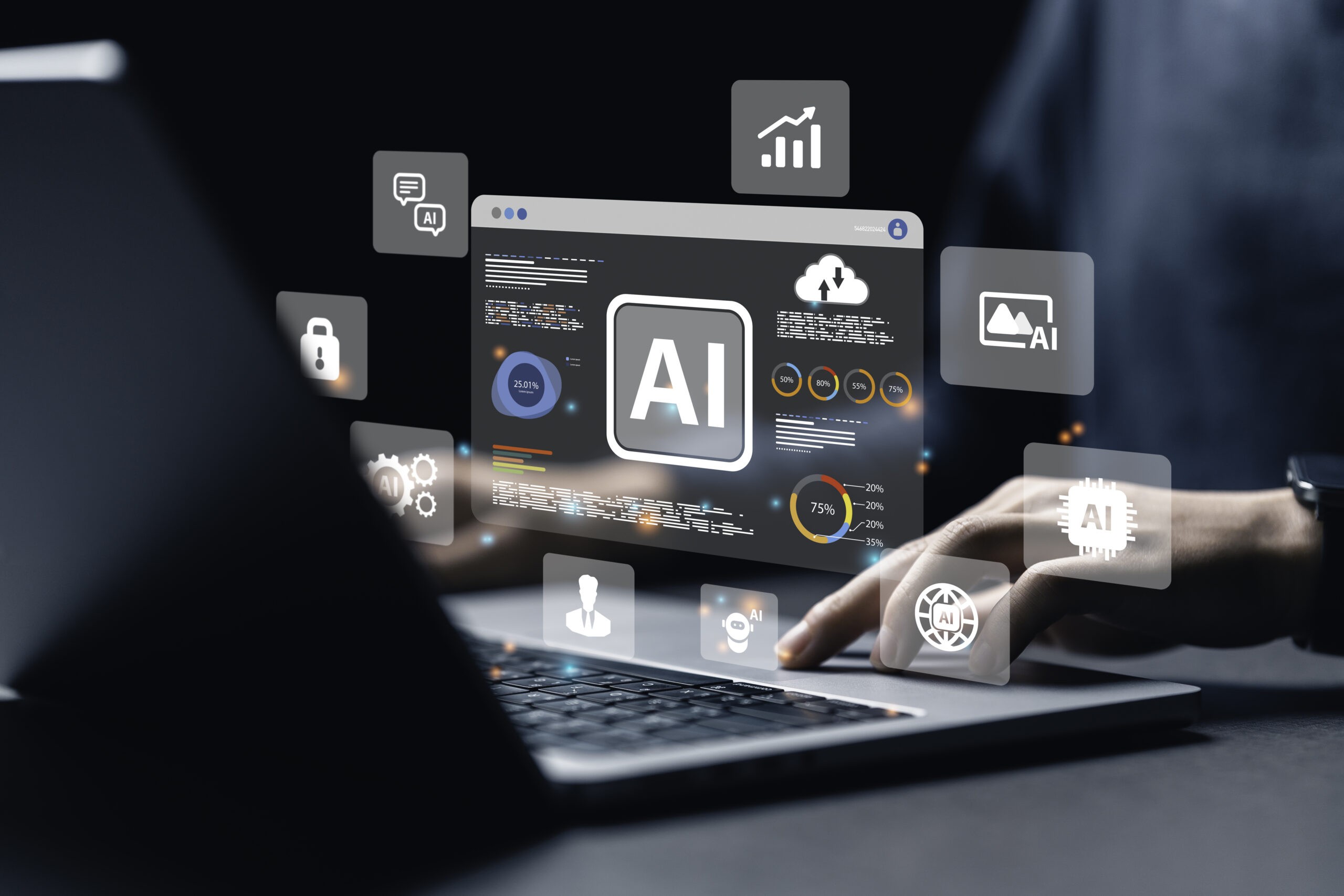
07
OctThe Impact of AI in Open Source Technology
Artificial Intelligence (AI) has evolved from a niche technology into a driving force that is reshaping industries and everyday life. As AI becomes increasingly mainstream, the role of open-source technology in its development has been pivotal. Open-source AI technology not only accelerates the pace of innovation but also makes AI tools and platforms more accessible to developers, researchers, and businesses worldwide.
In this blog, we will explore the synergy between AI and open-source technology, discussing the benefits, challenges, and future trends that are emerging in this space.
What Is Open Source AI?
Open-source AI refers to AI tools, frameworks, and platforms that are freely available for public use, modification, and distribution. These resources allow developers to access and contribute to the codebase, enhancing the AI systems by adding new features, fixing bugs, or adapting the software to specific needs.
Popular open-source AI platforms include:
TensorFlow:
TensorFlow open-source machine learning library developed by Google, widely used for developing deep learning models.
PyTorch:
Created by Facebook’s AI Research lab, PyTorch is known for its flexibility and ease of use in building neural networks.
OpenAI GPT:
OpenAI, a research organization, develops powerful natural language processing (NLP) models like GPT, which are open to researchers and developers under certain licenses.
Hugging Face Transformers:
A popular open-source library for NLP tasks, such as text classification, translation, and summarization.Open-source AI fosters collaboration, transparency, and rapid development in ways that proprietary software cannot match, and it plays a crucial role in democratizing AI technology.
The Benefits of Open-Source AI
Accessibility for All:
One of the primary benefits of open-source AI is its accessibility. With no upfront licensing costs, open-source AI frameworks and tools are available to anyone, from individual developers to large enterprises. This accessibility levels the playing field, allowing small businesses, startups, and academic institutions to engage in AI research and development without the financial barriers posed by proprietary software.
For instance, TensorFlow and PyTorch have empowered countless developers to experiment with deep learning models, building solutions in healthcare, finance, retail, and more. This open access has spurred innovation across industries and contributed to the exponential growth of AI applications.
Collaboration and Knowledge Sharing:
Open-source AI encourages collaboration across borders and industries. Researchers, developers, and organizations can work together to improve AI models, solve complex problems, and share their findings with the broader community.
Platforms like GitHub and GitLab host repositories for AI projects where developers can contribute to existing projects or fork them to create their own versions. This fosters a dynamic exchange of ideas, as seen in projects like Hugging Face’s Transformers, where community contributions have accelerated advancements in NLP.
Collaboration also extends to documentation and education. Open-source projects typically include detailed documentation, tutorials, and forums where developers can share best practices and troubleshoot issues. This open ecosystem enables faster learning and adoption of AI technologies.
Faster Innovation and Customization:
The open-source model allows for rapid experimentation and iteration. Developers can modify existing AI frameworks to suit their specific needs, whether it’s adjusting an algorithm for better performance or integrating AI into a custom business application.
Because the source code is open, developers are not restricted by the limitations of proprietary software. This freedom encourages customization, leading to more innovative solutions tailored to unique challenges. Companies like Uber and Airbnb have created custom AI systems built on top of open-source frameworks, tailoring the technology to their unique operational needs.
In addition, open-source AI encourages faster adoption of new features and methodologies. The global community of contributors continuously updates and improves open-source AI libraries, ensuring that the latest research and advancements are quickly incorporated into widely used tools.
Transparency and Security:
In the world of AI, transparency is becoming increasingly important, especially as ethical concerns around bias, data privacy, and accountability grow. Open-source AI promotes transparency because the source code is available for inspection by anyone. Developers and researchers can audit the code to ensure that the AI models are fair, unbiased, and safe to deploy.
Security is another key advantage of open-source AI. While proprietary AI systems may contain hidden vulnerabilities, open-source projects benefit from the scrutiny of thousands of developers and security experts. This broad oversight helps to identify and fix potential security flaws quickly, making open-source AI frameworks more secure in many cases.
Challenges Facing Open-Source AI
While the advantages of open-source AI are undeniable, there are also some challenges that must be addressed:
Data Access and Ownership:
Although the tools and frameworks for AI are open-source, access to high-quality data is often restricted. In many AI projects, the data used to train models is either proprietary or limited in availability due to privacy concerns. This creates a challenge for open-source AI development because, without access to large, diverse datasets, it’s difficult to build and train accurate AI models.
To mitigate this challenge, initiatives like OpenAI’s OpenAI Dataset and Google’s Open Images Dataset provide large, publicly available datasets for AI research. However, more efforts are needed to democratize access to data.
Computational Resources:
Building, training, and deploying AI models requires significant computational power, often involving expensive hardware like GPUs or cloud computing resources. For individuals or small organizations, these costs can become prohibitive, even if the AI software itself is open-source.
While cloud providers like Google Cloud AI, AWS, and Microsoft Azure offer some free-tier access to AI tools, the limitations can be restrictive for complex models or large-scale projects. Some open-source communities are exploring decentralized computing solutions to distribute the processing power needed for AI, but this remains an ongoing challenge.
Lack of Standardization:
Despite the growing popularity of open-source AI tools, there is still a lack of standardization across the ecosystem. Different frameworks may use different conventions or approaches, which can create compatibility issues when integrating multiple systems or migrating from one framework to another.
For example, TensorFlow and PyTorch are two of the most widely used frameworks, but they have different syntaxes and workflows. While some libraries, like ONNX (Open Neural Network Exchange), aim to standardize model formats between frameworks, more work is needed to improve interoperability across the open-source AI landscape.
Skill Gaps:
Working with open-source AI tools requires specialized knowledge and expertise. For many developers and organizations, there is a steep learning curve associated with adopting and utilizing these technologies effectively. The fast-paced nature of AI research means that new methods and frameworks are constantly emerging, making it difficult to stay up to date with the latest trends.
To address this challenge, educational platforms like Coursera, edX, and Kaggle provide free or affordable training on open-source AI tools. However, there remains a gap between the growing demand for AI professionals and the availability of talent with the necessary skills.
The Future of Open-Source AI
As AI technology continues to evolve, open-source platforms will play a crucial role in shaping its future. Several trends are emerging that will likely influence the trajectory of open-source AI:
AI for Everyone: Democratizing AI:
One of the primary goals of open-source AI is to democratize access to AI technology. As more tools, frameworks, and datasets become publicly available, individuals and small organizations will be able to leverage AI in ways that were once only possible for large corporations with deep pockets. Initiatives like Google’s AI for Social Good and AI4ALL are helping to ensure that AI technology is used to benefit society as a whole, rather than just a select few.
AI Ethics and Open-Source Development:
Ethical AI development is becoming a top priority for many organizations, and open-source AI is positioned to lead the charge. By making the inner workings of AI models transparent and accessible, open-source projects can ensure that AI is developed responsibly, with an emphasis on fairness, accountability, and inclusivity. The open-source community will likely play a critical role in shaping ethical guidelines and best practices for AI development in the years to come.
Cross-Platform Compatibility and Interoperability:
As the open-source AI ecosystem matures, there will likely be more efforts to improve compatibility and interoperability between different frameworks and tools. Projects like ONNX and initiatives within the AI Open Source Foundation are already working toward creating standards that make it easier to move AI models between platforms without losing functionality.
Community-Led Innovation:
Finally, the future of open-source AI will continue to be driven by the community. As more developers, researchers, and organizations contribute to open-source projects, the pace of AI innovation will accelerate. Open-source communities will remain at the forefront of cutting-edge AI research, driving breakthroughs in fields like natural language processing, computer vision, and reinforcement learning.
Conclusion
Open-source AI is transforming the landscape of artificial intelligence by making powerful tools and frameworks available to all. The collaboration, transparency, and rapid innovation that open-source technology fosters are driving AI development forward at an unprecedented rate. While there are challenges such as data access, computational resources, and skill gaps, the potential of open-source AI is limitless.
Author -

Sr. Software Developer

